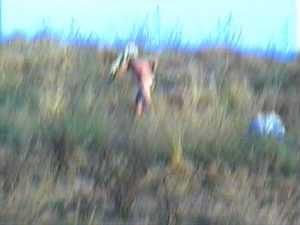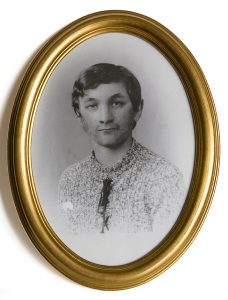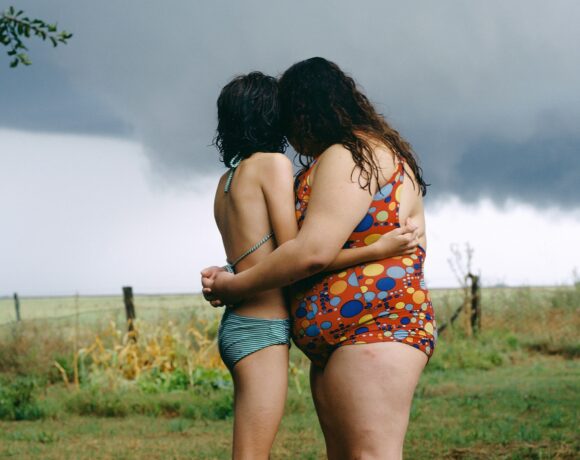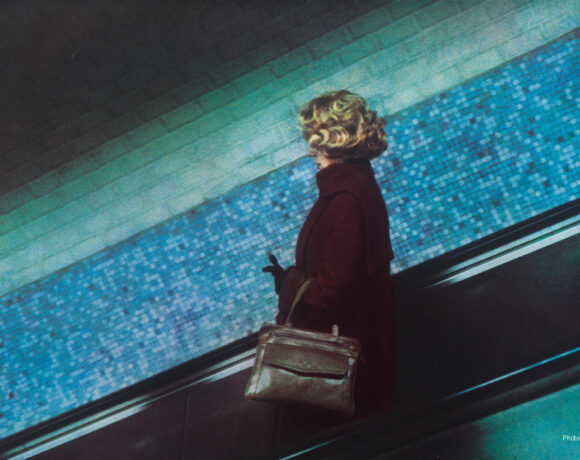Photography seems to have lost its dominion over time. The memory of the image is its ghost. We met Moira Ricci who at Como – Fondazione Ratti in Villa Olmo – exhibits her latest work – the “Monda Flago” flag – which reaffirms how the representation of a landscape is just the umpteenth perception of it. Not even the care of the archive can preserve the image from manipulation, memory interprets and is interpreted by the imagination.
Simone Azzoni: Working with archives presupposes the act of freeing the document from its support, returning it to a new narrative, to a current flow of consciousness… what is an archive for you and what are you looking for in the “place guarded by archons”?
Moira Ricci: With the exception of the work on my mother, in which the emotional relationship with the images was more intense, in the other works the archive images for me are a tool that allows me, also through manipulation, to obtain useful images to my project.
Memories have the power to interpret … The Da buio a buio (From dark to dark) project it is also an opportunity for coexistence in the myth of the repressed and the marginal … What remains eternal today while the ways of representation are changing?
I think that everything that is material cannot be eternal as everything is subject to transformation. Although images may be non-material, they still need support to remain in memory and therefore cannot be eternal.
What happens to an image when it survives without its author (lost in time or oblivion)? A ghost open to manipulation?
I think so! And I also think that when it becomes a “victim” of manipulation it can have the opportunity to live once again, despite the fact that its origin may be distorted. The alternative would be oblivion.
Photography was born with a credit of truth, in the past the objectivity of the documentation was recognized, a credit that today seems to have run out. What then is the power of the images? Photography has lost the battle with respect to truth, reliability…
Perhaps it is the truth itself that has lost the battle. The strength of the images is always the same, it is the way in which we consume them that makes us lose our attention.
Da buio a buio also seems to suggest an inversion in the process of creating the imagination. It seems to me that you are proposing a creation that becomes an image from the imagination…
It is often my way of working. In Da buio a buio especially because I recreated documents faithful to the stories I had heard told as a child and which I had elaborated after almost 30 years.
Fontcuberta provocatively states that “reality is not the opposite of fiction. On the contrary. Fiction is the bridge to understand reality “. What do you think about it?
I agree with Joan Fontcuberta.
In the reformulation of the concept of author that you propose with some of your projects (20.12.53 – 10.08.04) what is the role of the spectator?
I don’t expect anything from the viewer, I want everyone to be free to interpret the work with their own knowledge. In all my projects I also take the viewer into account, of course, but I always try to place myself in a position of respect while manipulating the images.
What is the soul of a photograph? Its immortal part?
I can only reflect on the fact that today I seem to see two different souls in photography, one more static and one more fluid that belongs to the present. Maybe that’s why I can’t answer you about the immortal aspect of photography.
Can you tell us the genesis of Da buio a buio?
During my childhood, my mother told me stories that really happened in some areas of the Maremma where I come from. But only in 2005, months after the loss of my mother, these stories came to mind. The stories were about a boar-child, a werewolf, a naked man dragging a stone across the fields of my farm and a child who had her twin in her womb. Later I went in search of their origins by talking to relatives and neighbors who were aware of these stories. Version after version I came to the truth, unfortunately disappointing compared to how I knew the stories. So I wanted to create a visual documentation of the stories by reworking them in part with the new testimonies that I had come to know about.
What projects are you focusing on now?
I am working on a new project but I am still in the research phase and I prefer not to talka bout it. Instead, I just finished a job that kept me busy for some time where I composed a landscape made with all the single geometric pieces and symbols of the flags of all the states of the world. The “Monda Flago” flag which in Esperanto means flag of the world is printed on the Ratti fabric in the format 6 x 1.45 meters. Now the flag is on display at the collective exhibition “Antonio’s Dream: A Journey Through Art and Textile”, in the Ratti Foudation in Villa Olmo in Como.
Cover image: Moira Ricci, Da buio a buio, film amatoriale girato in super8, 1981, realizzato dal signor Franco Bruni, Montiano, nel corso di una battuta di caccia notturna con il padre, still da video, 2009
 Moira Ricci, (I gemellini) Giannino sul seggiolino, data incerta, cornice originale, foto proveniente dall’archivio del signor Quinto Perugini, 2015
Moira Ricci, (I gemellini) Giannino sul seggiolino, data incerta, cornice originale, foto proveniente dall’archivio del signor Quinto Perugini, 2015
 Moira Ricci, Bambina cinghiale con il cane,1944; cornice originale; foto proveniente dalla bottega del fotografo di Magliano in Toscana
Moira Ricci, Bambina cinghiale con il cane,1944; cornice originale; foto proveniente dalla bottega del fotografo di Magliano in Toscana
 Moira Ricci, Da buio a buio, video girato in VHS, estate 1982, realizzato da mio cugino Francesco Ricci, loc. Collecchio, Magliano in Toscana, riversato su digitale, still da video, 2009
Moira Ricci, Da buio a buio, video girato in VHS, estate 1982, realizzato da mio cugino Francesco Ricci, loc. Collecchio, Magliano in Toscana, riversato su digitale, still da video, 2009
 Moira Ricci, Ritratto di Vasco Lumediluna adolescente; data incerta; cornice originale; foto proveniente dalla famiglia Leandri che ha conservato le foto trovate nella casa a Montiano acquistata dalla famiglia Lumediluna
Moira Ricci, Ritratto di Vasco Lumediluna adolescente; data incerta; cornice originale; foto proveniente dalla famiglia Leandri che ha conservato le foto trovate nella casa a Montiano acquistata dalla famiglia Lumediluna

He is an art critic and professor of Contemporary Art History at IUSVE. He also teaches Critical Image Reading at the Palladio Institute of Design in Verona and Contemporary Art at the Master of Publishing at the University of Verona. He has curated several contemporary art exhibitions in unconventional places. He is the artistic director of the Grenze Photography Festival. He is a theater critic for national magazines and newspapers. He organizes research and experimentation theatrical events. Among the recent publications Frame – Videoarte e dintorni for the University Library, Lo Sguardo della Gallina for Lazy Dog Editions and for Mimemsis Smagliature in 2018 and 2021 for the same publishing house, Theater and photography.






NO COMMENT